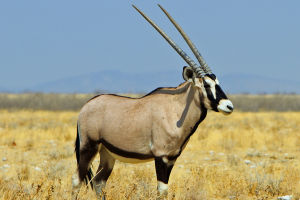Pelecanus Onocrotalus
Hey Lykkers! The majestic Pelecanus onocrotalus, commonly known as the Great White Pelican, is a stunning bird with extraordinary abilities.
Let’s dive into the world of the Great White Pelican and explore its unique traits and lifestyle.
Physical Characteristics
The Great White Pelican is a giant among birds. With a wingspan stretching up to 3.6 meters, this bird’s flight is a breathtaking sight. Their plumage is predominantly white, accented with black flight feathers and a striking pinkish tinge during the breeding season. The most distinctive feature, however, is their large, elastic throat pouch, used to scoop up fish from the water. The combination of size and elegance makes the Pelecanus onocrotalus an unmistakable figure in the sky or at sea.
Habitat and Distribution
The Great White Pelican is a resident of shallow lakes, swamps, and deltas, where water is abundant, and fish are plenty. These birds favor large bodies of water, both saline and freshwater, in warm climates. Africa, southeastern Europe, and parts of India are among the regions where these pelicans thrive. Their preference for lowland wetlands with minimal human disturbance makes them a frequent sight in national parks and reserves.
Diet and Feeding Habits
Fish forms the bulk of the pelican’s diet. With their characteristic fishing technique, pelicans dip their heads into the water and use their elastic pouches to trap fish. Working in groups, they sometimes herd fish into shallower waters, making it easier to catch their prey. This cooperative hunting strategy highlights the pelican’s social nature and intelligence.
Breeding and Behavior
Breeding season is a spectacle for the Pelecanus onocrotalus. During this period, their feathers acquire a pinkish hue, enhancing their already striking appearance. Pelicans nest in large colonies, often alongside other waterbirds. The female lays 1 to 3 eggs, and both parents take turns incubating them. The young pelicans are fed by regurgitation, a typical behavior among pelican species.
Conservation Status
While not currently classified as endangered, the Great White Pelican faces threats due to habitat loss and pollution. Wetland drainage, fishing nets, and human activities disrupt their natural habitats, and efforts are being made to protect these majestic creatures. Conservation programs in regions like Africa and Europe are crucial in maintaining stable populations of this species.
Cultural Significance
Throughout history, pelicans have held symbolic meanings in various cultures. In ancient Egypt, they were associated with protection and nurturing. Their unique method of feeding their young has been seen as a symbol of selflessness, further enhancing their image in myths and stories across the globe.
The Great White Pelican is more than just a large bird; it is a symbol of grace, intelligence, and community. From their cooperative hunting techniques to their impressive migrations, these birds leave a lasting impression on those lucky enough to witness them in their natural habitat. With continued conservation efforts, the Pelecanus onocrotalus will continue to soar through the skies and charm onlookers for generations to come.
Great White Pelican [Pelecanus Onocrotalus]
Video by Avi Birds


